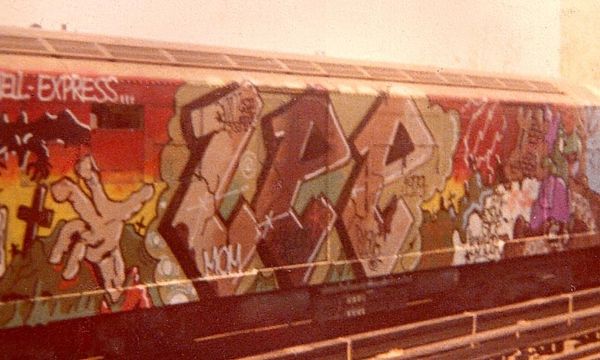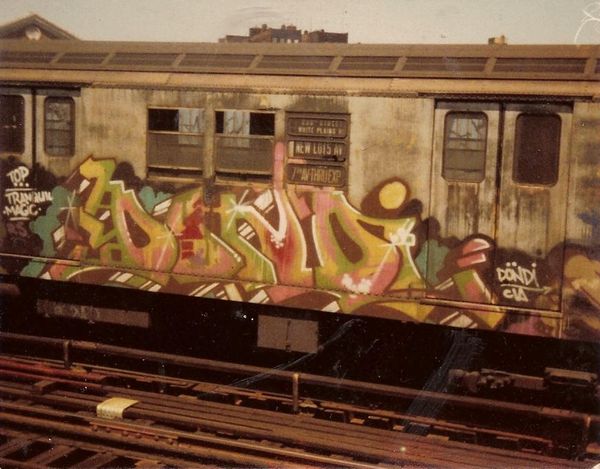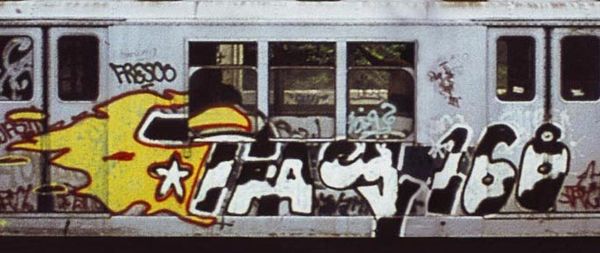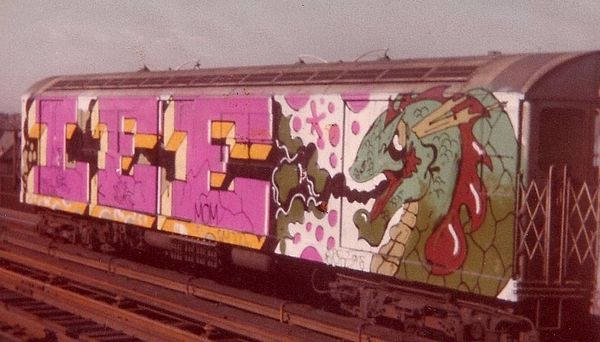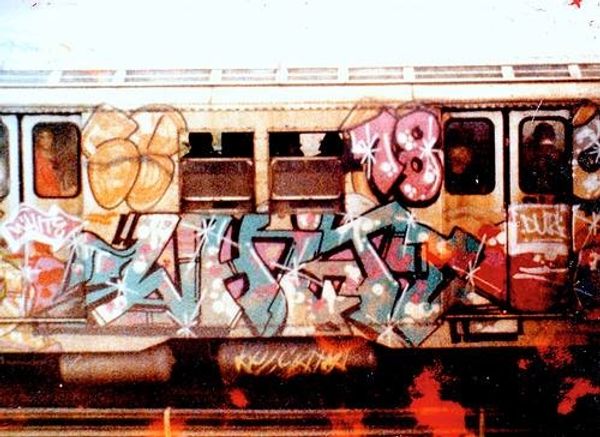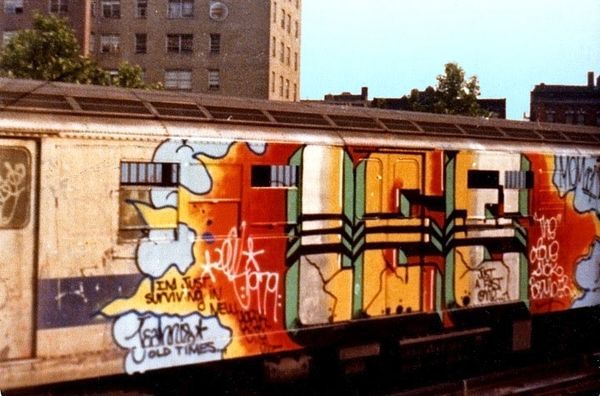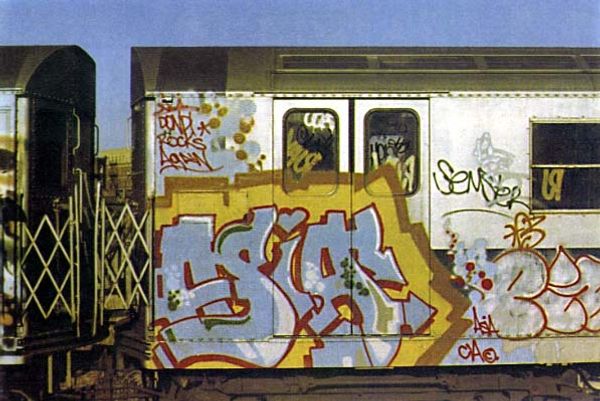
#
graffiti
#
graffiti art
#
street art
#
graffiti design
#
urban advertising
#
street graffiti
#
urban life
#
urban art
#
tagging
#
urban living
Copyright: Lee Quinones,Fair Use
Curator: Looking at "Racing Car," a work from 1976 by Lee Quinones, immediately brings to mind an urban landscape reclaimed as canvas. The raw energy jumps out, doesn't it? Editor: Absolutely! My first impression is pure kinetic energy, like the side of this train car is blurring even standing still. There’s something beautifully rebellious and ephemeral about it. Do you feel it's about motion and speed, despite the static image? Curator: I see it as a powerful assertion of presence in the face of a system, quite literally in transit. Notice how the name “LEE” dominates the composition, a symbol in and of itself, referencing both the artist and potentially universal themes of identity and the need to leave a mark. What layers do you uncover beneath the immediate aesthetic? Editor: Beyond just the artist's tag, there’s a distinct warning: "If we don't use our heads now, we may lose our tails later.” This transforms what could be simple tagging into social commentary— a reminder of consequence. Graffiti often seems like chaos but always seems to deliver a clear-eyed perspective from those on the periphery. Curator: It’s a crucial insight. We're seeing layers of symbols—both conscious and unconscious—stacked upon one another, transforming a simple statement of identity into something much more complex about the era and the community's feeling about survival, its outlook on life, or what their world was offering them at that point in time. Editor: Graffiti and street art have the effect of temporarily breaking what everyone thought about shared public space. I can see it working as urban folk art from the seventies, how it expresses that drive to take public voice beyond official structures—literally, democratizing space. In what other directions could these urban markings lead? Curator: By looking into the symbolism here we may think of cultural memory and its transformations, its cultural influence to younger generations in urban society. Graffiti becomes a part of history making its artists time capsules within public life, or in this case an ephemeral public place, like a rail car. Editor: Thinking about it now, beyond all the historical weight and interpretation...it’s still kind of badass. Like a visual middle finger with a smart, slightly existential twist! Curator: Well said, if art is supposed to provoke thought or change a space with image or words or some kind of symbolic combination then this is truly transformative, but you made it sound really, really cool.
Comments
No comments
Be the first to comment and join the conversation on the ultimate creative platform.
